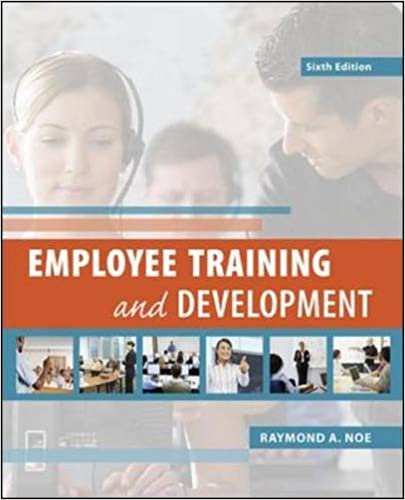
Employee Training and Development 6th Edition by Raymond Noe
Edition 6ISBN: 978-0078029219
Employee Training and Development 6th Edition by Raymond Noe
Edition 6ISBN: 978-0078029219 Exercise 1
What are intangible assets? How do they relate to training and development?
Explanation
In an organizational context, assets refer to the things that an organization owns. Some of the examples of organizational assets are machines and equipment. Assets can be of two types, as follows:
1. Tangible
2. Intangible
The term intangible refers to anything that can't be touched.
In an organizational context, intangible assets refer to the organizational assets that are not in material form. This includes the following:
1. Human capital - This includes the employees and suppliers base etc.
2. Customer capital - This includes the customer base, loyal customers etc.
3. Social capital - This includes the brand name and social recognition an organization gathers by performing service to the society.
4. Intellectual capital - This includes the know-how, knowledge base and other form of related intellectual assets.
Training and development increases the value of the intangible assets by developing them and thus creates a competitive advantage for the organization.
For example, training session for front-end employees develops them as leaders and managers. This allows organizations to use them in case of problems and leadership crises situations.
1. Tangible
2. Intangible
The term intangible refers to anything that can't be touched.
In an organizational context, intangible assets refer to the organizational assets that are not in material form. This includes the following:
1. Human capital - This includes the employees and suppliers base etc.
2. Customer capital - This includes the customer base, loyal customers etc.
3. Social capital - This includes the brand name and social recognition an organization gathers by performing service to the society.
4. Intellectual capital - This includes the know-how, knowledge base and other form of related intellectual assets.
Training and development increases the value of the intangible assets by developing them and thus creates a competitive advantage for the organization.
For example, training session for front-end employees develops them as leaders and managers. This allows organizations to use them in case of problems and leadership crises situations.
Employee Training and Development 6th Edition by Raymond Noe
Why don’t you like this exercise?
Other Minimum 8 character and maximum 255 character
Character 255


